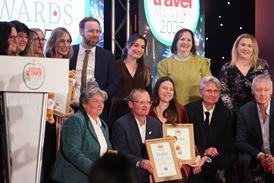
Feeling dinosaur poo, testing your strength against that of a T-Rex and watching a live dinosaur autopsy: Dinosaurs in the Wild is the interactive learning experience your class has been waiting for.
Dinosaurs in the Wild is an immersive theatrical experience that uses computer-generated imagery and animatronics to create the impression of a believable prehistoric world.
It’s great for teachers seeking somewhere to take their class to learn about dinosaurs, Science and History, and most suitable for Key Stage 2 pupils. A full Key Stage 2 education pack has been created, although Key Stage 3 pupils will also enjoy and get a lot out of the experience. Pre- and post-visit lesson plans have been created, and can be downloaded from the website.
Dinosaurs in the Wild opened at the NEC in Birmingham at the end of June, where it will remain until 23rd August, before transferring to EventCity in Manchester from 7th October until 7th January 2018.
What will school groups get up to?
School groups taking a visit will explore a recreated prehistoric world and learn about its inhabitants.
A visit to Dinosaurs in the Wild begins with a jump back in time, followed by a spectacular dinosaur-spotting ride across prehistoric plains, then a tour of a Time Base building where the study of dinosaurs is key.
Along the way the children will visit different parts of the Time Base, including a room for nocturnal creatures, where torchlights are swung over mammal animatronics; the egg hatchery, where pupils can see baby Triceratops squirming inside their shells; and the autopsy room, where you can expect to see a live autopsy that includes an in-depth examination of the brain, digestive system and mouth of a Pachycephalosaurus.
The journey ends on an exhilarating high that involves running through tunnels under a lake that’s home to a Mosasaur in a race against time (and dinosaurs) to get back to the present day. Overall the experience is 70 minutes long.
CGI footage: the real highlight
One of the most impressive element of Dinosaurs in the Wild is the CGI footage that shows the abundance of different dinosaurs that would have lived in the Cretaceous Period. Not only does it provide an up close view of these prehistoric creatures, the footage is often paired with information boards that explain a bit about each living thing.
At several points along the journey, pupils will get to ‘look’ out of windows with 3D glasses on, to observe what appears to be real-life Thescelosaurus, Quetzalcoatlus, Tyrannosaurus Rex, and Ankylosaurus (plus many more). The quality and diversity of the scenes unfolding will have them completely drawn in.
A Quetzalcoatlus flying over the Time Base, a female Alamosaurus casually crossing the grassy plains, a Triceratops running alongside a vehicle that you’re sat in – all of these things become normal as you’re drawn into the recreated world.
For more information, and to make a school booking, visit www.dinosaursinthewild.com.










